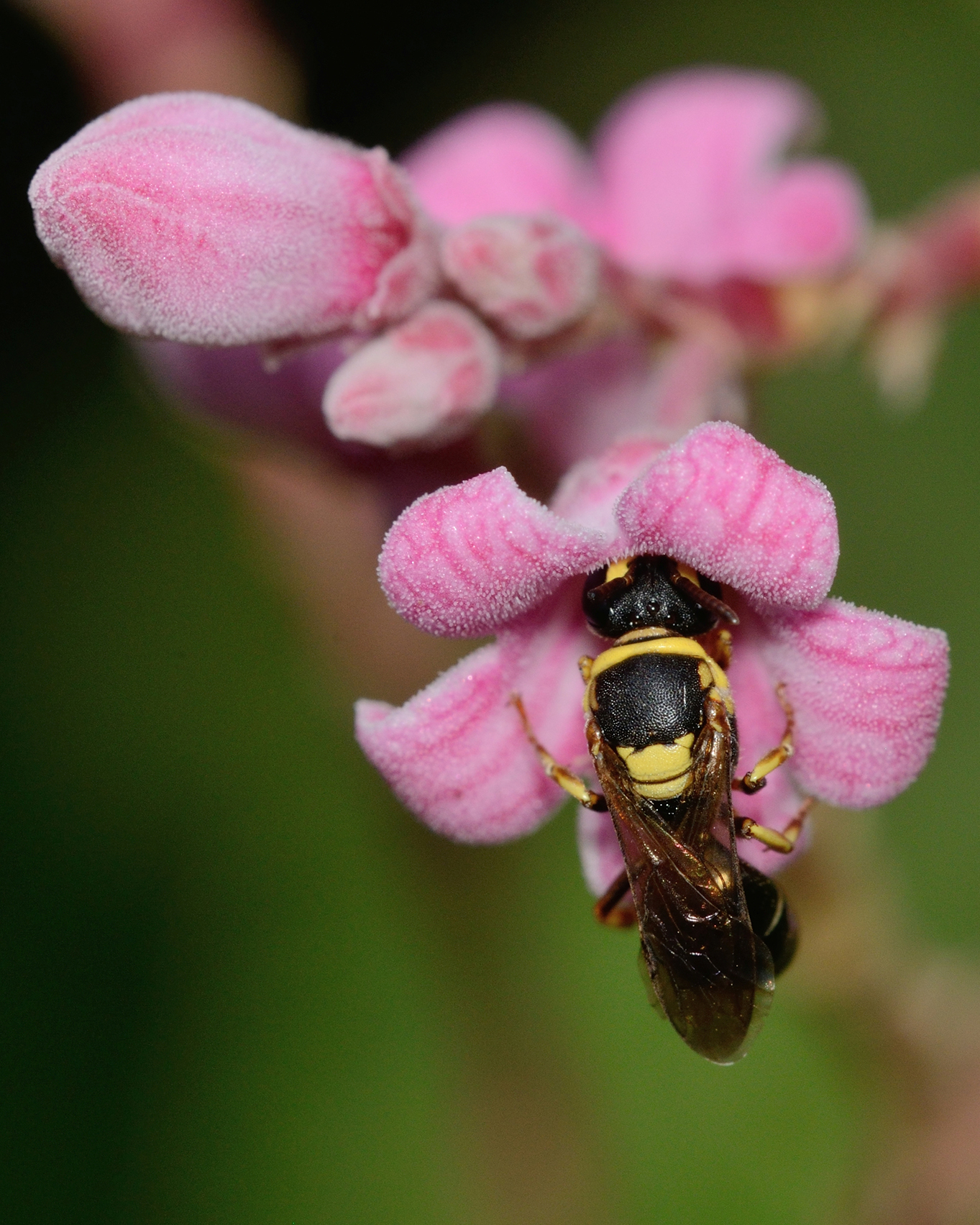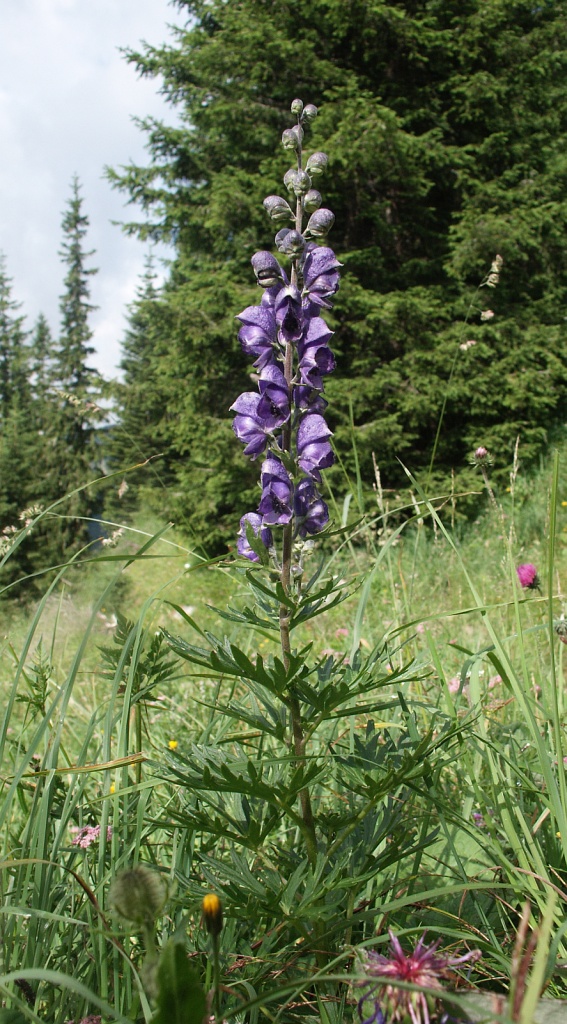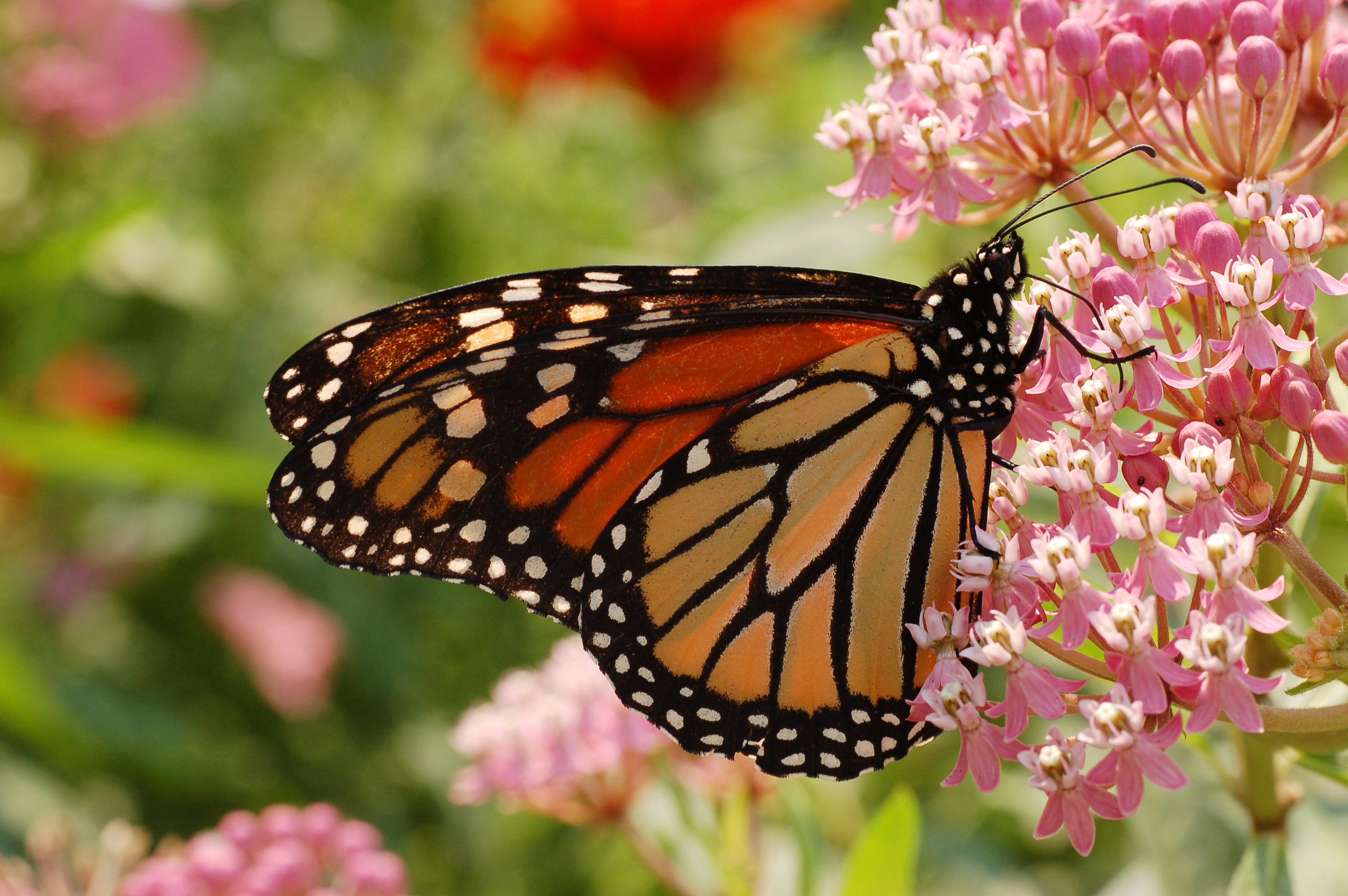|
Dogbane
Dogbane, dog- bane, dog's bane, and other variations, some of them regional and some transient, are names for certain plants that are reputed to kill or repel dogs; " bane" originally meant "slayer", and was later applied to plants to indicate that they were poisonous to particular creatures. History of the term The earliest reference to such names in common English usage was in the 16th century, in which they were applied to various plants in the Apocynaceae, in particular ''Apocynum''. Some plants in the Asclepiadoideae, now a subfamily of the Apocynaceae, but until recently regarded as the separate family Asclepiadaceae, were also called dogbane even before the two families were united. It is not clear how much earlier the name had been in use in the English language, which originated about 1000 years earlier in mediaeval times. However, centuries before the appearance of the English language, Pedanius Dioscorides, in his ''De Materia Medica'', had already described members of ... [...More Info...] [...Related Items...] OR: [Wikipedia] [Google] [Baidu] |
Apocynaceae
Apocynaceae (from ''Apocynum'', Greek for "dog-away") is a family of flowering plants that includes trees, shrubs, herbs, stem succulents, and vines, commonly known as the dogbane family, because some taxa were used as dog poison Members of the family are native to the European, Asian, African, Australian, and Americas, American tropics or subtropics, with some temperate members. The former family Asclepiadaceae (now known as Asclepiadoideae) is considered a subfamily of Apocynaceae and contains 348 genera. A list of Apocynaceae genera may be found List of subfamilies and genera of Apocynaceae, here. Many species are tall trees found in tropical forests, but some grow in tropical dry (xeric) environments. Also perennial plant, perennial herbs from temperate zones occur. Many of these plants have milky latex, and many species are poisonous if ingested, the family being rich in genera containing alkaloids and cardiac glycosides, those containing the latter often finding use as arr ... [...More Info...] [...Related Items...] OR: [Wikipedia] [Google] [Baidu] |
Apocynum
''Apocynum'', commonly known as dogbane or Indian hemp, is a small genus of the flowering plant family Apocynaceae. Its name comes from Ancient Greek , from "away" and "dog", referring to dogbane (''Cionura erecta''), which was used to poison dogs. The genus is native to North America, temperate Asia, and southeastern Europe. ''Apocynum'' species are used as food plants by the larvae of some Lepidoptera species, including the mouse moth and the queen butterfly. Uses '' Apocynum cannabinum'' was used as a source of fiber by Native Americans. '' Apocynum venetum'' () is used as an herbal tea in China. Dogbane contains cymarin, a cardiotonic agent formerly used to treat cardiac arrhythmia Arrhythmias, also known as cardiac arrhythmias, heart arrhythmias, or dysrhythmias, are irregularities in the Cardiac cycle, heartbeat, including when it is too fast or too slow. A resting heart rate that is too fast – above 100 beats per mi ... in humans. Species Almost 300 nam ... [...More Info...] [...Related Items...] OR: [Wikipedia] [Google] [Baidu] |
Nerium
''Nerium oleander'' ( ), most commonly known as oleander or nerium, is a shrub or small tree cultivated worldwide in temperate and subtropical areas as an ornamental and landscaping plant. It is the only species currently classified in the genus ''Nerium'', belonging to subfamily Apocynoideae of the dogbane family Apocynaceae. It is so widely cultivated that no precise region of origin has been identified, though it is usually associated with the Mediterranean Basin. Nerium grows to tall. It is most commonly grown in its natural shrub form, but can be trained into a small tree with a single trunk. It is tolerant to both drought and inundation, but not to prolonged frost. White, pink or red five-lobed flowers grow in clusters year-round, peaking during the summer. The fruit is a long narrow pair of follicles, which splits open at maturity to release numerous downy seeds. Nerium contains several toxic compounds, and it has historically been considered a poisonous plant. Howeve ... [...More Info...] [...Related Items...] OR: [Wikipedia] [Google] [Baidu] |
Cynanchum
''Cynanchum'' is a genus of about 300 species including some swallowworts, belonging to the family Apocynaceae. The taxon name comes from Greek ''kynos'' (meaning "dog") and ''anchein'' ("to choke"), hence the common name for several species is dog-strangling vine. Most species are non- succulent climbers or twiners. There is some evidence of toxicity. Morphology These plants are perennial herbs or subshrubs, often growing from rhizomes. The leaves are usually oppositely arranged and sometimes are borne on petioles. The inflorescences and flowers come in a variety of shapes. Like other species of the milkweed family, these plants bear follicles, which are podlike dry fruits. Distribution These species are found throughout the tropics and subtropics. Several species also grow in temperate regions. Importance The root of '' Cynanchum atratum'' is used in Chinese traditional medicine and called ''Bai wei''. Several other species had traditional Chinese medicinal uses. '' Cy ... [...More Info...] [...Related Items...] OR: [Wikipedia] [Google] [Baidu] |
Trachelospermum
''Trachelospermum'' Star Jasmine, Confederate Jasmine, is a genus of evergreen woody vines in the dogbane family Apocynaceae, first described as a genus in 1851. All species are native to southern and eastern Asia. They have long stems climbing to 12 m or more high in trees. The leaves are opposite, simple broad lanceolate to ovate, 2–8 cm long and 0.5–4 cm broad. The flowers are salverform (like those of Phlox), simple, 2.5–7 cm broad, with five white, pale yellow or purple petals joined at the base to form a tube. The generic name ''Trachelospermum'' comes from the Greek, literally meaning "neck seed", and referring to the seed shape. Despite its common name, the species is not a "true jasmine" and not of the genus Jasminum. Species # '' Trachelospermum asiaticum'' (Siebold & Zucc.) Nakai - China (incl Tibet + Taiwan), Japan (incl Ryukyu + Bonin Islands), Korea, Indochina, Assam, Borneo, W Malaysia # '' Trachelospermum assamense'' Woodson - Assam, ... [...More Info...] [...Related Items...] OR: [Wikipedia] [Google] [Baidu] |
Bane (plant)
The term bane (from ang, bana, meaning "thing causing death, poison"), in botany, is an archaic element in the common names of plants known to be toxic or poisonous. In the Middle Ages, several poisonous plants of the genus ''Aconitum'' were thought to have prophylactic qualities, repelling and protecting against that which they were ''banes'' to (e.g. ''henbane'', ''wolfsbane''). Variants There is no single species, genus, or family of poisonous plant exclusively referred to as ''banes''. Several unrelated plants bear the name. ;Austrian leopard's bane :''Doronicum austriacum'', it grows between approximately 60 and 90 centimetres high with a spacing of 45 to 60 cm. It prefers full sun exposure to partial shade, requires little water, blooms in late spring to early summer, and has a bloom colour of bright yellow. The propagation for this plant would be division of rhizomes, tubers, corns, or the bulbs including the off position of the seeds. ;Common dogbane :''Apocynum andros ... [...More Info...] [...Related Items...] OR: [Wikipedia] [Google] [Baidu] |
Bane (plant)
The term bane (from ang, bana, meaning "thing causing death, poison"), in botany, is an archaic element in the common names of plants known to be toxic or poisonous. In the Middle Ages, several poisonous plants of the genus ''Aconitum'' were thought to have prophylactic qualities, repelling and protecting against that which they were ''banes'' to (e.g. ''henbane'', ''wolfsbane''). Variants There is no single species, genus, or family of poisonous plant exclusively referred to as ''banes''. Several unrelated plants bear the name. ;Austrian leopard's bane :''Doronicum austriacum'', it grows between approximately 60 and 90 centimetres high with a spacing of 45 to 60 cm. It prefers full sun exposure to partial shade, requires little water, blooms in late spring to early summer, and has a bloom colour of bright yellow. The propagation for this plant would be division of rhizomes, tubers, corns, or the bulbs including the off position of the seeds. ;Common dogbane :''Apocynum andros ... [...More Info...] [...Related Items...] OR: [Wikipedia] [Google] [Baidu] |
Milkweed - Or Oleander - Aphid, Aphis Nerii
''Asclepias'' is a genus of herbaceous, perennial, flowering plants known as milkweeds, named for their latex, a milky substance containing cardiac glycosides termed cardenolides, exuded where cells are damaged. Most species are toxic to humans and many other species, primarily due to the presence of cardenolides, although, as with many such plants, there are species that feed upon them (e.g. their leaves) and from them (e.g. their nectar). Most notable are monarch butterflies, who use and require certain milkweeds as host plants for their larvae. The genus contains over 200 species distributed broadly across Africa, North America, and South America. It previously belonged to the family Asclepiadaceae, which is now classified as the subfamily Asclepiadoideae of the dogbane family, Apocynaceae. The genus was formally described by Carl Linnaeus in 1753, who named it after Asclepius, the Greek god of healing. Flowers Members of the genus produce some of the most complex flow ... [...More Info...] [...Related Items...] OR: [Wikipedia] [Google] [Baidu] |
Plectranthus
''Plectranthus'' is a genus of about 85 species of flowering plants from the sage family, Lamiaceae, found mostly in southern and tropical Africa and Madagascar. Common names include spur-flower. ''Plectranthus'' species are herbaceous perennial plants, rarely annuals or soft-wooded shrubs, sometimes succulent; sometimes with a tuberous base. Several species are grown as ornamental plants. The cultivar = 'Plepalila' has received the Royal Horticultural Society's Award of Garden Merit. Recent phylogenetic analysis found ''Plectranthus'' to be paraphyletic with respect to '' Coleus'', ''Solenostemon'', ''Pycnostachys'' and ''Anisochilus''. The most recent treatment of the genus resurrected the genus ''Coleus'', and 212 names were changed from combinations in ''Plectranthus'', ''Pycnostachys'' and ''Anisochilus''. ''Equilabium'' was segregated from ''Plectranthus'', after phylogenetic studies supported its recognition as a phylogenetically distinct genus. Etymology The w ... [...More Info...] [...Related Items...] OR: [Wikipedia] [Google] [Baidu] |
Asteraceae
The family Asteraceae, alternatively Compositae, consists of over 32,000 known species of flowering plants in over 1,900 genera within the order Asterales. Commonly referred to as the aster, daisy, composite, or sunflower family, Compositae were first described in the year 1740. The number of species in Asteraceae is rivaled only by the Orchidaceae, and which is the larger family is unclear as the quantity of extant species in each family is unknown. Most species of Asteraceae are annual, biennial, or perennial herbaceous plants, but there are also shrubs, vines, and trees. The family has a widespread distribution, from subpolar to tropical regions in a wide variety of habitats. Most occur in hot desert and cold or hot semi-desert climates, and they are found on every continent but Antarctica. The primary common characteristic is the existence of sometimes hundreds of tiny individual florets which are held together by protective involucres in flower heads, or more t ... [...More Info...] [...Related Items...] OR: [Wikipedia] [Google] [Baidu] |
Isocoma Menziesii
''Isocoma menziesii'' is a species of flowering plant in the family Asteraceae, known by the common name Menzies' goldenbush. It is native to California, Baja California, and Baja California Sur, where it grows in coastal and inland habitat such as chaparral, particularly in sandy soils.Nesom, G.L. 1991. Taxonomy of ''Isocoma'' (Compositae: Astereae). Phytologia 70(2): 69–114 includes distribution map on page 72 Description ''Isocoma menziesii'' is a subshrub forming a matted bush reaching heights of . The erect branching stems may be hairless to woolly, are generally glandular, and vary in color from gray-green to reddish brown. The leaves are oval-shaped to somewhat rectangular, gray-green and som ...[...More Info...] [...Related Items...] OR: [Wikipedia] [Google] [Baidu] |
Ranunculaceae
Ranunculaceae (buttercup or crowfoot family; Latin "little frog", from "frog") is a family of over 2,000 known species of flowering plants in 43 genera, distributed worldwide. The largest genera are '' Ranunculus'' (600 species), '' Delphinium'' (365), '' Thalictrum'' (330), '' Clematis'' (325), and '' Aconitum'' (300). Description Ranunculaceae are mostly herbaceous annuals or perennials, but some are woody climbers (such as '' Clematis'') or shrubs (e.g. '' Xanthorhiza''). Most members of the family have bisexual flowers which can be showy or inconspicuous. Flowers are solitary, but are also found aggregated in cymes, panicles, or spikes. The flowers are usually radially symmetrical but are also found to be bilaterally symmetrical in the genera '' Aconitum'' and '' Delphinium''. The sepals, petals, stamens and carpels are all generally free (not fused), the outer flower segments typically number four or five. The outer stamens may be modified to produce only nectar ... [...More Info...] [...Related Items...] OR: [Wikipedia] [Google] [Baidu] |



